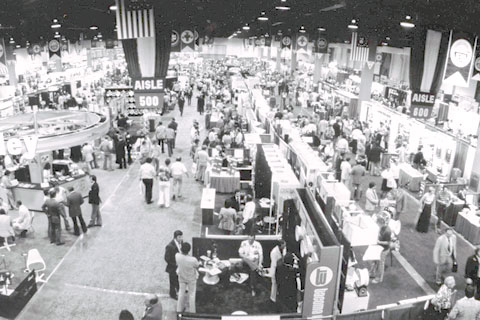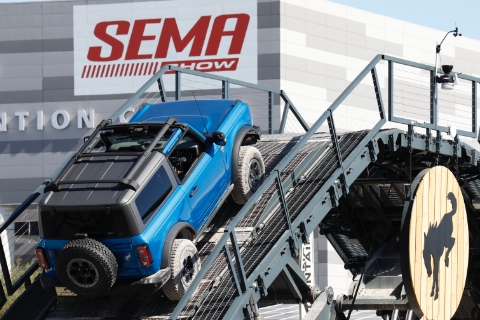SEMA News -- April 2009
RESEARCH
By Ty Michael and Zack Krelle
Pitting Performance Against Appearance: Which Is More Important Now?
 |
Nissan’s 240SX, Honda’s Civic and |
Urban-lifestyle enthusiasts have one very prominent trait that carries over from the early days of lowriding to the heyday of oversized wheels on pickups and SUVs to today’s more moderate mixture of each: Style and being different is of utmost importance. Add to that the need to infuse interests in music, sports, entertainment and vehicle performance (since big wheels need big power in order to at least make up for the extra weight). One distinctive crossover sub-niche, the Americanized VIP market, employs styles similar to the urban market (i.e., body kits, expensive wheels, lowered profile) with a twist. Even the pure compact-performance market shares some vehicles and lifestyle behaviors with those in the urban-lifestyle market.
Knowledge of enthusiast lifestyles plays an important role when specialty-equipment companies plan their marketing strategies for one main reason: successfully capturing and attracting the attention of potential customers to the company’s brand.
 |
Vehicles, such as this Dodge Charger |
Creating and maintaining a particular brand image is important, especially among the younger urban and compact-performance segments of consumers. However, branding embodies different meanings for the two crowds.
Urban-lifestyle enthusiasts seek labels with an established reputation for style. These companies are known for their attention to lifestyle elements (music, fashion, etc). In contrast, compact-performance enthusiasts set their sights on brands that have an established distinction for performance.
Automotive Lifestyles and Specialty Equipment
 |
Table 1 |
Let’s start with the vehicles. Enthusiasts claiming to be part of the urban-lifestyle segment of consumers own a diverse array of cars and light trucks. Topping the list of vehicles driven by urban enthusiasts were Ford Mustangs, Chevrolet Corvettes, Ford F-Series pickups and Honda Civics (see table 1). Other more notable “urban” vehicles, such as the Chrysler 300 and Cadillac Escalade, have more presence at urban-lifestyle targeted car shows; however, actual enthusiasts sporting an “urban” look often drive vehicles characteristic of a multitude of market niches. Urban enthusiasts also have an eye for luxury (shown by the two Lexus models also making the list of most-owned vehicles) as do those involved in the compact-performance scene, where the Nissan 240SX, Honda Civic and Mitsubishi EVO topped the list.
Another significant point where compact-performance and urban enthusiasts share similarities is in the products they purchased. When the enthusiasts were asked what performance parts and accessories they purchased over the last year, it became apparent that both performance and appearance products play an important role to these two |
Table 2 |
Differences Among Automotive Enthusiasts
 |
Table 3 |
The last piece of the enthusiast puzzle is how urban-lifestyle and compact-performance enthusiasts actually differ. Besides vehicles owned, compact-performance enthusiasts are heavily geared toward performance, while urban-lifestyle enthusiasts lean more toward appearance. Around 95% of enthusiasts within the compact-performance niche said that they specifically customize their vehicle to increase performance, while 87% of urban-lifestyle enthusiasts gave the same response (8% is a significant difference). In contrast, 36% of the same enthusiasts said that they prefer to modify the appearance of their vehicles over performance, and while this is a relatively small percentage, it is more than double the 16% of compact-performance enthusiasts who prefer appearance over performance. Another significant difference involves place of purchase among these two groups of enthusiasts. Both groups indicated that they purchased the largest percentage of their specialty equipment at online retail stores, but 39% of compact-performance enthusiasts indicated so compared to 24% of urban-lifestyle enthusiasts (see table 4, left).
 |
Table 4 |
Compact-performance and urban-lifestyle enthusiasts also differ with respect to demographics. The urban group tended to be a bit older while earning a substantially larger household income compared to enthusiasts within the compact-performance market. On average, urban-lifestyle enthusiasts surveyed were 33 years old, whereas compact-performance enthusiasts were six years younger. Also, the average income of enthusiasts within the urban-lifestyle market was nearly $17,000 more than their compact-performance counterparts.
The data presented in this article is quite comprehensive, but one thing to keep in mind is that automotive enthusiasts of all forms have similarities and differences but are all potentially profitable customers if correctly targeted. This means that a thorough understanding of compact-performance and urban-lifestyle enthusiasts will significantly improve the chances of getting a company’s products into the hands of its desired consumers.








